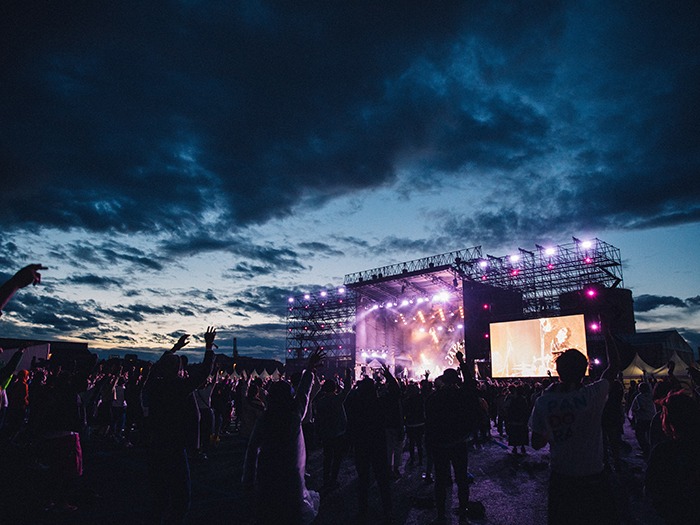JAPAN JAM 2021 took place at Soga Sports Park in Chiba over the country’s big May public holiday weekend. The annual event, which has already taken place three times at this venue, had to be cancelled last year due to the COVID-19 pandemic — marking the first event in two years, held under strict health and safety conditions.
Last time around, more than 30,000 people participated daily in the festival; however, this year the number was limited to 10,000 per day, and the event was devoid of alcohol. The audience needed to obey the rules such as wearing masks and were able to enjoy the live performance in 1m square frames arranged in front of the stage.
As in previous years, Martin Audio MLA was adopted as the main speaker, with 10 MLA elements including an MLD Downfill and three stacks of subwoofers, nine per side in total, on main stage, with the middle sub rear-facing for the cardioid pattern. In addition, four WPM were equipped as front fill / outfill.
Many precautions were taken to avoid infection, even at the stage area. Bunshiro Hote, of sound rental company, MSI JAPAN Tokyo, reflected on this. “The microphones that would normally have been reused, were completely replaced. As a result, we used five lines (including spares) to operate only the announcements. We introduced a UV irradiation desiccator for some mics that needed to be used by multiple people, while the console was sanitised every time the sound engineer changed. All vocal microphones for the artistes and talkback mics for the engineers were regulated.
System Designer, Bun Hote stated: “Regarding Covid, Tokyo was in a state of emergency and as a neighbouring prefecture, Chiba also needed to prevent the spread of infection. It made us more nervous and considerate of noise complaints than usual.”
He added: “When we did the sound check, we played the CD at 100dBA at FOH, and prepared three delay settings of 60m, 70m, and 80m from the stage for the main MLA area, and assessed to what degree it could be heard at the monitoring point outside the venue. As a result, we chose the 70m pattern as the standard in the three-stage MLA area, and since the Lotus Stage was the nearest to the street, we started this at 60m.”
After missing last year, the fans were suitably excited about the event. “The management was struggling to ensure that customers could enjoy high quality sound, without at the same time influencing the neighbourhood. It was, therefore, necessary to adjust the range of sound depending on the audience population and the wind speed,” he continued. “Of course, we checked the monitoring of the neighbourhood as well and we sometimes changed the settings depending on the situation. MLA was the perfect choice to make this possible.”
Hote concluded: “The Japanese live entertainment business has been stuck for two years. We could not get enough compensation [from the Government], and many businesses were closed. I believe in the power of music to heal the people who are tired of this situation and want to increase the number of safe live entertainment operations. Although there are pros and cons for hosting this event, we pulled it off without any increase of COVID-19. I hope that, with the help of this event, it will gradually gain the support and confidence of the music industry throughout the summer.”

